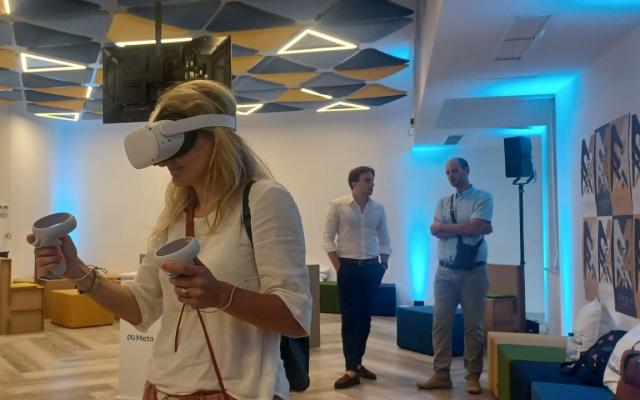A short report on the “Metaverse in Healthcare” Event
On April 5, Binario F hosted a reflection on the interesting concept of the "Mediverse," a forward-looking innovation that transfers healthcare into the metaverse.
The concept of the metaverse was introduced in 1992 by Neal Stephenson, but there are many definitions for it. One of the most interesting is by Matthew Ball, who identifies four key points: shared experience, interoperability, virtual, and persistence.
Organised by the Fondazione Mondo Digitale in collaboration with the Medical Association, start-up People, and project partners (Simm, Simmed, Meta, and Engineering), the "Metaverse for Healthcare" event provided an opportunity to reflect on this technology for health and wellbeing.
The Importance of Keeping Up
Mirta Michilli, Director General of the Fondazione Mondo Digitale, underlined the importance of keeping abreast of technological development, especially in education and medicine, a sector in which “technological developments are rapid and pervasive.”
Michilli’s outlook is shared by Ennio Tasciotti, Director of the Human Longevity Programme at IRCCS San Raffaele, who expressed his trust in the imminent revolution represented by the Mediverse. According to Tasciotti, almost all revolutions are characterised by a “initial phase of resistance to change.” However, the advantages are so great that it is impossible to resist innovation. The Mediverse promises to overcome geographical and physical boundaries, opening up new possibilities for patient care.
Objective: Focusing on patients
In such an innovative and potentially revolutionary context, it is important to keep sight of the main objective: focusing on patients. Indeed, Pier Luigi Ingrassia, Scientific Director of the Simulation Centre (CeSi), also points out that the careful use of digital tools can have a significant effect in healthcare. “I invite everyone to abandon scepticism with regard to digital innovation.” Ingrassia believes that the adoption of new technology will promote the social and relational components of the profession, just as the cognitive and mnemonic ones.
The Mediverse has a wide range of possible application. Thus, as emphasised by Andrea Barbara, a member of the executive committee of the Italian Society for Leadership and Management in Medicine (SIMM), transdisciplinary training will be important for medical personnel. And, while it is true that there is a strong initial enthusiasm for the metaverse in medical education, it also reveals the need for continuous support to master these techniques and apply them efficiently to clinical practice, explains Nicola Illuzzi, a board member of the Rome Surgeons and Dentists Association, who added that it is now indispensable to “intercept possible realities that wish to invest in this sector and train future doctors to change their user experience.”
Experiential Session
Paolo Lippi, Nume Plus SRL, presented SIMX, a multiplayer platform developed by doctors for doctors, that allows advanced remote interaction. Tommaso Santaniello, CEO of Huvant, illustrated how technology can support clinical practice and improve medical education.
Brainstorming Session
In the finale phase of the event, Elisa Amorelli from the Fondazione Mondo Digitale moderated a discussion on diffusion and access to the devices necessary to access the metaverse, highlighting the importance of logistical management to make visors more available and accessible. Moreover, considerations emerged on the applicability of the metaverse to medical training and telemedicine, with an outlook for growth and continuous innovation.
Conclusions and Future Steps
Nicola Illuzzi concluded the event with an invitation to continue sharing and exploring further projects to capitalise on the potential of the metaverse in healthcare. The commitment to promote training and adopt new technology is crucial to improve the experience both of doctors and patients.




